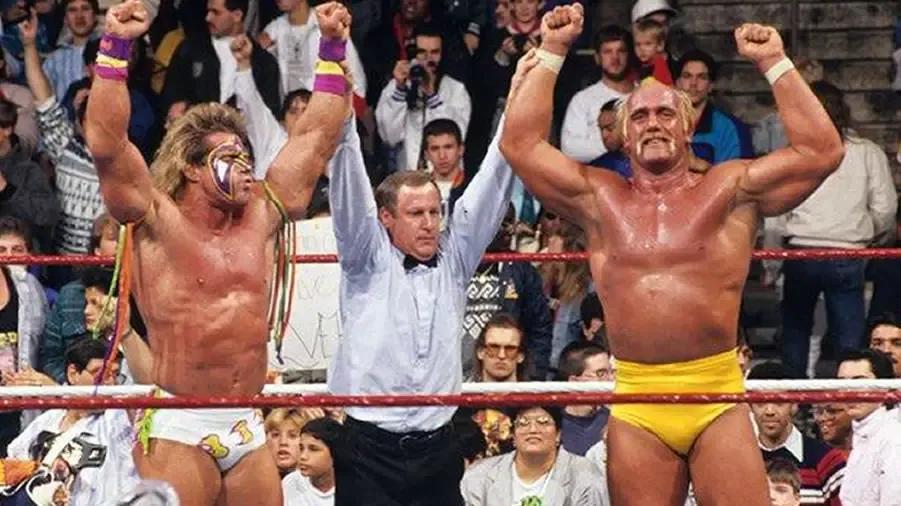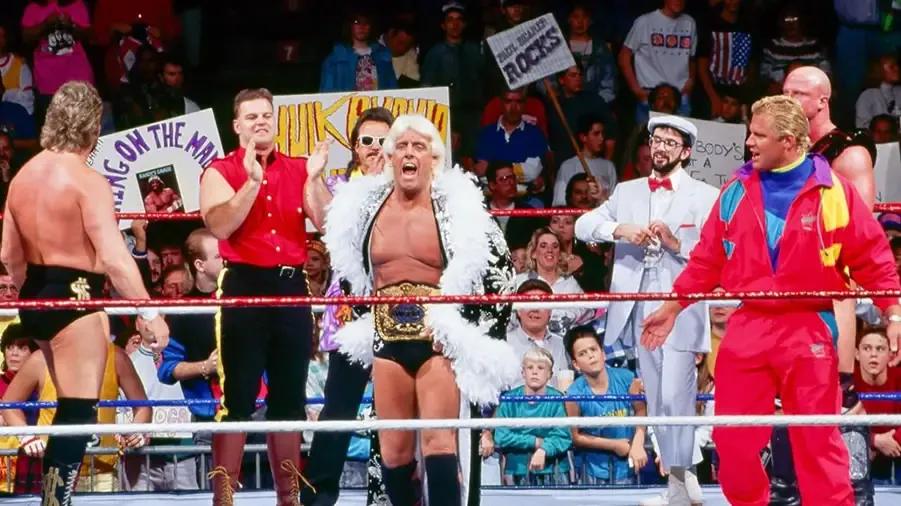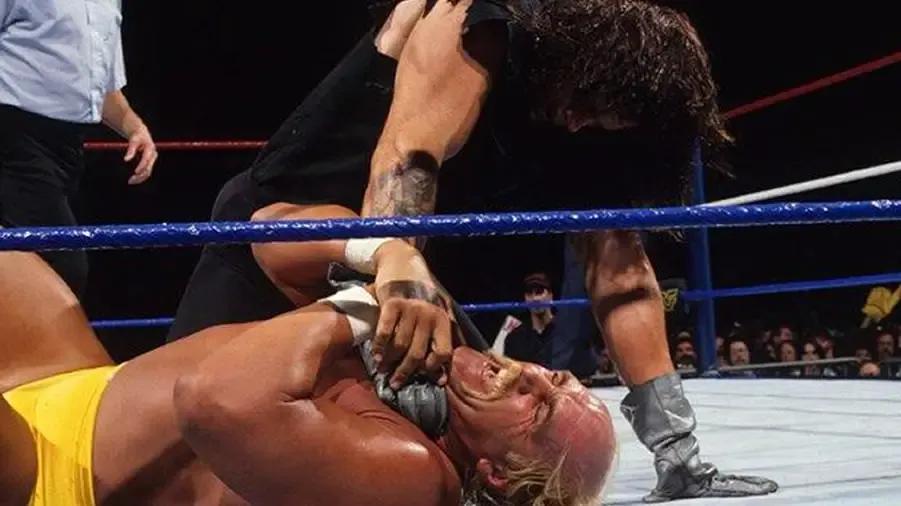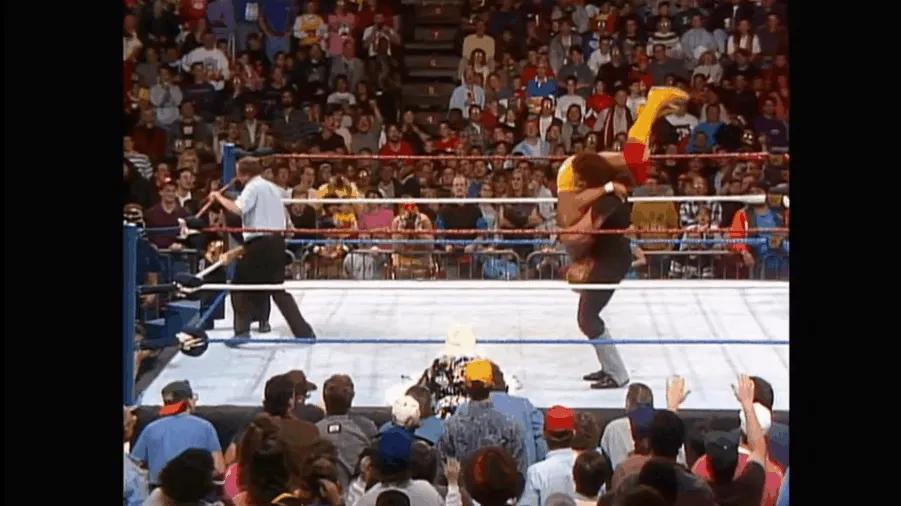10 Things We Learned From WWE Survivor Series 1991
Ric Flair passing off a Tag Team title as the World Heavyweight Championship?!

Oct 24, 2018
Hope you like commercials, because that's exactly what Survivor Series 1991 was - a $30 infomercial that was used to promote the forthcoming This Tuesday in Texas experiment. In the days of only four WWE pay-per-views a year, you would never see parts of one pay-per-view used to hype the next one, under the guise of: "Well kids, if you wanna see what happens next..."
The two big matches for that supplementary show were a Hulk Hogan/Undertaker rematch for the WWE Championship (facilitated by the controversial ending between the two at Survivor Series) and a Randy Savage/Jake Roberts brawl, with neither man wrestling at Survivor Series, but instead delivering hype promos. The message seemed to be: "Why are you bothering to watch Survivor Series? The show that comes up next week is where it's *really* at."
As for what we actually got at Survivor Series, it was fair to say that this was the weakest entry in the event's chronology to this point. Bad, uninspired matches, as well as the surrounding sense that the show was merely a hype central staging area, took away from what had been a wonderful annual tradition to this point, a valued part of the Thanksgiving holiday (this being the first to air on Thanksgiving Eve). I will say this much in its defense, though - at least there were no dancing turkeys.

The 1990 show came equipped with a "Grand Finale" match, in which all of the previous elimination match survivors would do battle in something of a Survivor Series parlay. In the end, Hulk Hogan and The Ultimate Warrior got to survive twice, and the Grand Finale concept would never be used again for the event. But try telling that to WWE Magazine.
One issue of the Magazine distributed that fall featured a Survivor Series 1991 hype article within, and the feature made mention of there being a Grand Finale match at this event too. That seemed to be the only instance where such a match was promised (the article was probably written during the event's preliminary planning stages), and no actual mention of a Grand Finale for the 1991, as anyone could recall, ever made it to WWE TV.

The 1991 Survivor Series would mark the first WWE pay-per-view match of "Nature Boy" Ric Flair, who bolted from a Jim Herd-run WCW with the Big Gold Belt in his possession. WWE stuck their thumb deep into Herd's eye when they had Flair, and adviser Bobby Heenan parade the strap on WWE programming, as Flair declared himself the "Real World's Champion."
As part of the storyline of Flair declaring himself such, the physical belt would be blurred or blacked out by WWE's production staff under official orders, due to the belt not being an official WWE title. When Flair worked to reach a financial settlement with WCW over ownership of the strap, he began using a different belt for the gimmick (since it was going to be blurred anyway). For Survivor Series 1991, the belt that Flair brandished was a WWE World Tag Team title.

In simpler times, they were Ricky "The Dragon" Steamboat and Tito Santana. Come the fall of 1991, they were "The Dragon" (with little to no mention of his distinguished past) and El Matador (Santana repackaged as a bullfighter). Certainly, things had changed since the days when Randy Savage was the go-between for their respective runs as Intercontinental Champion.
The Dragon and Matador also share a Survivor Series connection. For the 1991 show, The Dragon (Steamboat, damn it, he's Ricky Steamboat) was to have appeared on Hacksaw Jim Duggan's team, but he quit the company one month previously. He had given his notice, but then walked out after being asked to lose to both Undertaker and IRS at a TV taping in Fort Wayne, IN. Some stories have claimed that Steamboat was asked to do a stretcher job for each, and he found it to be excessive. In any event, Santana replaced the departing Steamboat.

The team opposing Duggan's quartet was a rather eclectic group of men, featuring an Iraqi Colonel, a Viking, a swamp-dweller, and a powerhouse based on old mythology. The latter member of the team was Hercules, who was essentially in the final lap of his six-year WWE run. And he wasn't even originally intended to take part in the Survivor Series - he replaced somebody that had recently left.
That man was Nick "Big Bully" Busick, a veteran powerhouse whose gimmick was that of an early 20th-century roughneck, complete with derby hat, turtleneck sweater, super-thick handlebar mustache, and cigar. Busick lasted only about four months with WWE, quitting the company about three weeks before Survivor Series. Sadly, Mr. Busick passed away this past May at the age of 63, after valiantly battling several forms of cancer over the last few years of his life.

Interestingly, Santana and Hercules being added to the show allowed them to take part in an interesting claim - they became two of the only four men to have competed in an elimination match at each of the first five Survivor Series events between 1987 and 1991. And they were merely fill-ins in 1991, after each making it to the Grand Finale one year earlier.
The other two men to share this distinction are Hacksaw Jim Duggan and Bret Hart, who would've been the only two, had Steamboat and Busick not quit the promotion before the 1991 show. Hulk Hogan joins the four as the only other person to have wrestled on each of the five shows, taking part in Survivor matches at the first four, and wrestling Undertaker solo in 1991.

The crowd reaction in the Hulk Hogan/Undertaker "Gravest Challenge" WWE Championship match proved quite interesting. Though Hogan would have his detractors over the years, most WWE crowds were overwhelmingly pro-Hulk, but not this audience in Detroit. The understandable staleness of eight years of Hulkamania, plus Hogan's tarnished public image as a result of the Arsenio Hall interview, led to a cooler reaction for the champ.
Plus, Undertaker was just so damn cool, not to mention fresher. The crowd at Joe Louis Arena were probably 60/40 in favour of the ghoulish challenger, with some noticeable jeers for Hogan (not at Roman levels, but palpable enough). The Wrestling Observer noted that two large banners brought by fans that praised Undertaker (which would have reportedly been facing the hard camera) were confiscated before the show, as WWE still wanted Hogan to be the clear hero.

The end of the Hulkamania era may as well have come when Undertaker deposited Hogan into the ground with a Tombstone Piledriver, capturing the WWE Championship before a half-excited Motor City crowd. The win for Undertaker was historic in its own right, capping off an impressive rookie year with WWE in grand fashion, and even earned him (urned him?) a special claim.
With the win, Undertaker became (at the time) the youngest WWE Champion ever, at 26 years, eight months. His win broke the record set by Bruno Sammartino in 1963 (27 years, seven months) when Bruno felled Buddy Rogers. Undertaker's record would barely stand for 16 months, when Yokozuna (26 years, six months) defeated Bret Hart at WrestleMania IX. Yoko's mark stood for almost a decade before Brock Lesnar (25 years, one month) shattered it at SummerSlam 2002.

When Undertaker hoists Hogan up for the final Tombstone, it's Ric Flair who places a steel chair on the canvas, so that Hulk's dome can be planted into the painful weapon. Watching the move, it's clear that Hogan came nowhere close to hitting the chair *or* the canvas, as Undertaker held him high enough during the execution. Yet, Hogan ended up spending the night in a local hospital anyway.
As it turns out, Hogan *did* injure himself a little bit on the move. When Undertaker tucked Hogan's head to keep him from hitting the mat, Hulk's head was embedded against his upper leg, and on impact, Hogan's neck kinked enough to cause concerning pains. Hogan was unable to film a hype interview that night for This Tuesday in Texas as a result, but would be back on the road in a few days.

Flair wasn't the only ex-Horseman signed by WWE in 1991. The former Sid Vicious (now Sid Justice) arrived on the scene as an unfathomable monster of a man, and (at first) a fair-minded one. Sid was programmed into Survivor Series to captain a team of himself, Big Boss Man and The Legion of Doom against Jake Roberts, IRS, and The Natural Disasters.
However, about seven weeks before the PPV, Sid tore his biceps at a live event in Orlando while working with Roberts. The injury would keep Sid out of action until about the 1992 Royal Rumble. As a result, instead of inserting Savage into Sid's place (which would've been the sensible thing to do), WWE held off on the Savage/Roberts conflict and turned the match into a three-on-three affair instead.

If you go back at the 1991 SummerSlam (which took place after the aforementioned Hogan/Arsenio Hall interview regarding steroid use), you'll notice how WWE pay-per-view buyrates began a downhill slide that would shape the company's fortunes well into the mid-nineties. SummerSlam 1991 was down 20 per cent from the previous year, and Survivor Series 1991 would also feel the brunt of the tumble.
The 1991 Survivor Series was the least bought event of its name, bringing in 300,000 buys. To that point, it was the fourth least bought WWE Big Four pay-per-view ever (ahead of only the 1989 and 1990 Rumbles, and WrestleMania 2). It had also dropped 25 per cent from the previous year's Survivor Series, which did 400,000 buys. Even more alarming - it would take another seven years for Survivor Series to hit 300,000 buys again.